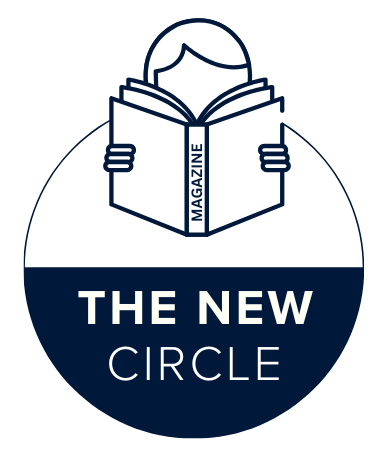Introduction
The human genome is not a static blueprint but a dynamic, often unstable, structure. While single-nucleotide polymorphisms (SNPs) have long been studied, it is increasingly clear that large-scale genomic alterations, known as structural variants (SVs), play a profound role in health and disease. From driving the genomic chaos of cancer to causing developmental disorders, SVs are pivotal. However, their detection and precise characterization have remained a significant challenge, often falling into the blind spots of conventional genomic technologies. This is where Directional Genomic Hybridization (DGH A) emerges as a transformative solution. This article provides molecular biologists, geneticists, and biomedical researchers with a comprehensive exploration of DGH-A, detailing its innovative mechanism, robust protocol, and distinct advantages for high-resolution structural variant analysis. You will gain a clear understanding of why [dgh a] is becoming an indispensable tool in modern cytogenomics, offering directional insight that resolves ambiguities left by other methods.
The Genomics Challenge: Why Structural Variants Require DGH A
Structural variants—encompassing deletions, duplications, inversions, translocations, and more complex rearrangements—can disrupt gene regulation, create novel fusion genes, or alter gene dosage with dramatic consequences. In cancer, SVs are a hallmark of genomic instability, often dictating tumorigenesis and therapy response. In genetic diagnostics, they are a leading cause of unexplained intellectual disability and congenital anomalies. Accurately mapping these variants is not a mere academic exercise; it is critical for diagnosis, prognosis, and the development of targeted therapies.
Limitations of Traditional SV Detection
For decades, researchers have relied on a toolkit with inherent limitations when confronting SVs:
- Karyotyping and Fluorescence In Situ Hybridization (FISH): These cytogenetic workhorses provide a cell-by-cell view but suffer from low resolution (>5-10 Mb for karyotyping). They are labor-intensive and, crucially, require prior knowledge of the target region for probe design, making them unsuitable for genome-wide discovery of novel rearrangements.
- Array Comparative Genomic Hybridization (aCGH): aCGH represented a major advance, enabling high-resolution, genome-wide detection of copy number variations (CNVs) by comparing test and reference DNA hybridized to microarray probes. However, aCGH has a fundamental flaw: it is “blind” to balanced rearrangements. Inversions or balanced translocations, which do not alter DNA copy number, are completely invisible to aCGH. Furthermore, while it can detect imbalances, it cannot determine the orientation or precise junction of rearranged segments.
These gaps in capability create a critical need for a technology that combines the genome-wide scope of arrays with the ability to detect balance and directionality. This is the precise niche that DGH-A fills.
Unpacking DGH-A: Principle, Protocol, and Directional Insight
At its core, Directional Genomic Hybridization (DGH-A) is an advanced evolution of comparative genomic hybridization. What sets it apart is the deliberate preservation of strand-specific information during the hybridization process. While standard CGH methods fragment DNA indiscriminately, DGH-A incorporates a strategic step that tags or preserves the directional identity of each nucleic acid fragment.
The Core Mechanism of Directionality
The revolutionary power of DGH-A lies in its treatment of the DNA library. The key innovation occurs during probe preparation:
- Directional Labeling: Genomic DNA is not simply fragmented and labeled. Instead, the process involves creating a library where the two complementary strands of DNA are differentially labeled or tagged with specific molecular “barcodes.” This can be achieved through various methods, such as incorporating nucleotide analogs that are specific to each strand or using enzymatic steps that assign distinct fluorescent dyes (e.g., Cy3 and Cy5) to each of the two DNA strands in a non-random fashion.
- Preservation of Orientation: When these directionally labeled probes are hybridized to a target genome (e.g., metaphase chromosomes or a genomic array), the hybridization signal carries more than just intensity information (which indicates copy number). The color ratio or specific barcode signal at any given genomic location reveals the orientation of the hybridized fragment.
For example, in the case of an inversion, the expected order of strand-specific signals along the chromosome will be reversed. For a translocation, the signal pattern will show a junction where the directional sequence from one chromosome is abruptly adjacent to the sequence from another. This directional data is what allows DGH-A to unequivocally identify balanced rearrangements that aCGH misses.
The DGH-A Laboratory Workflow
The practical application of DGH-A involves a meticulous but highly informative protocol:
- Sample Preparation: High-quality genomic DNA (gDNA) is extracted from patient cells, tumor tissue, or cell lines.
- Probe Preparation and Directional Labeling: This is the critical step. The test and reference gDNA samples are processed to create the directionally labeled library. This involves fragmentation, followed by a series of enzymatic reactions (e.g., end-repair, A-tailing, and ligation of strand-specific adapters) that ultimately allow for the differential labeling of each strand.
- Hybridization: The labeled test and reference probes are co-hybridized to a target. This target can be metaphase chromosomes for a cytogenetic view or, more commonly, a high-density oligonucleotide array for base-pair-level resolution.
- Image Capture and Computational Analysis: Following hybridization and washing, the array or slide is scanned using a high-resolution fluorescence scanner. Sophisticated bioinformatics pipelines are then employed. These algorithms do not just measure fluorescence intensity ratios to call CNVs; they also analyze the spatial distribution and combination of the two directional signals to map breakpoints and assign orientation to rearranged segments, providing a comprehensive view of genomic architecture.
DGH-A’s Superiority: Advanced Applications in Research and Medicine
The unique data output of DGH-A translates into tangible advantages over legacy methods, opening new avenues in both basic research and clinical diagnostics.
High-Resolution Structural Variant Mapping
DGH-A excels where other technologies fail:
- Resolving Complex Rearrangements: Cancer genomes, in particular, are prone to “chromothripsis” or “chromoplexy”—catastrophic events involving dozens of localized rearrangements. DGH-A can reconstruct these complex event patterns by determining the order and orientation of the rearranged fragments, providing unprecedented insight into the mechanisms of genomic instability.
- Detecting Cryptic Variants and Low-Level Mosaicism: The high signal-to-noise ratio and directional information allow DGH-A to identify small, balanced inversions or translocations that are cytogenetically cryptic. Furthermore, its sensitivity enables the detection of mosaic SVs (present in only a subset of cells), which is crucial for understanding certain genetic disorders and tumor heterogeneity.
Clinical and Translational Impact
The applications of DGH-A are rapidly expanding into translational settings:
- Cancer Genomics: In oncology, DGH-A provides a detailed picture of the genomic alterations in a tumor biopsy. It can identify driver fusion genes resulting from balanced translocations (e.g., involving ALK, ROS1, NTRK), assess the degree of genomic instability as a prognostic marker, and track the evolution of subclonal populations during treatment.
- Genetic Diagnostics: For patients with unexplained developmental disorders where standard genetic testing (including chromosomal microarray) is negative, DGH-A offers a powerful next-step. It can reveal pathogenic balanced inversions or other complex SVs that disrupt gene function without changing copy number.
- Synergy with Sequencing: DGH-A does not necessarily replace whole-genome sequencing (WGS); rather, it complements it. DGH-A can be used as a discovery tool to identify regions of interest, which can then be validated and sequenced at ultra-high depth. Conversely, computational predictions of SVs from WGS data can be confirmed and oriented using DGH-A, resolving ambiguities in short-read sequencing data.
Conclusion
The landscape of genomic analysis is evolving from simply cataloging variants to understanding their complex structural context. DGH-A stands at the forefront of this shift. By moving beyond the limitations of copy-number-based assays to incorporate essential directional data, it provides a more complete and accurate picture of the genome’s architecture. For researchers and clinicians grappling with the complexities of cancer, genetic disease, and genomic instability, DGH-A is no longer a niche technique but a critical component of a comprehensive genomic toolkit. Its ability to detect and characterize the full spectrum of structural variants with high resolution makes it indispensable for unlocking the next layer of genomic discovery.
To enhance the accuracy, scope, and translational impact of your structural variant research, we encourage you to explore integrating DGH-A technology into your laboratory’s capabilities.

